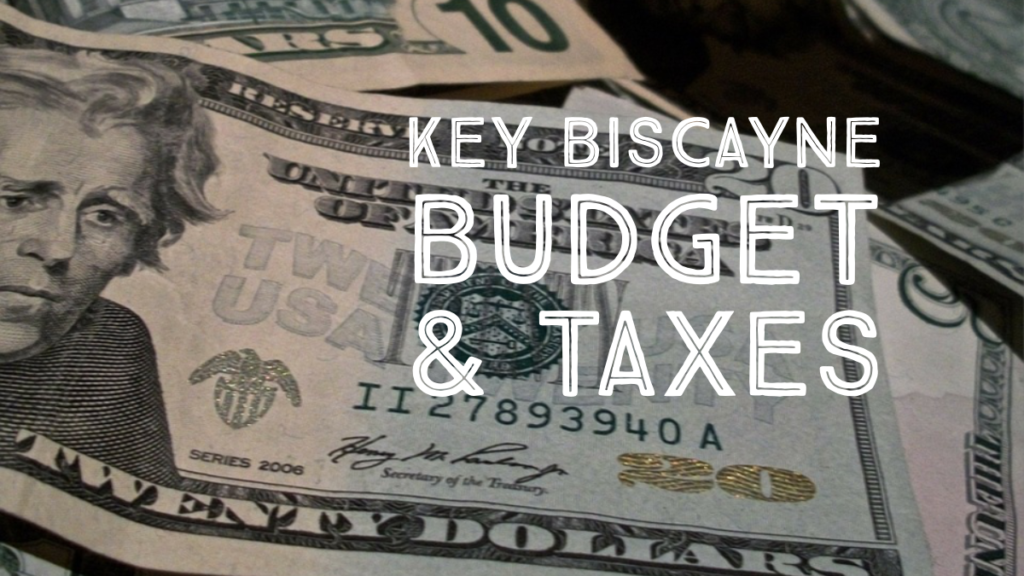Key Biscayne Finally Passes $36 Million Budget in Mammoth Meeting
Annali HaywardSeptember 26, 2019

Key Biscayne budget photo stock (Adobe)
The Village of Key Biscayne put its budget to bed Tuesday night following a rambling meeting typical of this year’s process. The Village Council voted 6-1 to approve the budget on second reading after Councilmember Luis Lauredo’s last-ditch attempt to cut expenditures by 3 percent across the board failed to garner support.
“I guess I have no option but to vote no,” said Lauredo, “because I want to have a reduction.”
Landing on a millage rate of 3.1950 to fund the agreed-upon expenses, officials set the Village’s budget at $36,377,401 for fiscal year 2020; an increase of roughly $850,000, or 2.5 percent over the current budget.
Mayor Mike Davey expressed dissatisfaction with the meeting, which lasted almost four hours.
“We’re going to be much better next year, folks,” said Davey at 11:20 p.m. as the meeting adjourned. “I’m not proud of this work product.”
What does it all mean?
The millage rate set by the Village is part of the calculation to determine the portion of taxes property owners pay for local services and programs. For 2019 this was 3.1, or $3.10 on every $1,000 of assessed property value within the Village. Because Key Biscayne property values decreased slightly since last year, Council faced the decision – revisited annually – whether to raise the millage rate to provide for needed revenues or to reduce expenditures.
The millage rate that would have kept local taxes flat as compared to 2019, known as the rolled-back rate, would have been 3.1580.
The millage set by the Village is 0.037 over the rolled-back rate. Key Biscayne’s millage rate year-after-year has been the lowest in the County. Council was able to keep the millage rate close to flat by cutting some capital projects.
What are they going to spend it on?
Some of the big-ticket items approved were $1 million for expanding the Community Center and $1.2 million for park improvements at 530 Crandon.
But in a budget cycle dominated by debate over resiliency, it was a mixed bag in terms of funding green issues.
$600,000 was budgeted for a shoreline protection project, and funding at $2.7 million was allocated for the first phases of our next beach renourishment and dune restoration, to proceed over five years.
A heated discussion flared again on the issue of a Chief Resiliency Officer, resulting in what some felt was a half-measure of $150,000 for a resilience ‘program.’
Village Manager Andrea Agha had proposed $125,000 to contract a part-time resiliency position with a separate line item for a $50,000 resiliency master plan.
“I want a real Chief Resiliency Officer,” said Davey. Lauredo disagreed, referring to resiliency as the “latest vogue word.”
The Council agreed to fund a position, by combining the resiliency officer role and the $50,000 for master planning. The overall funding commitment for resiliency remained at $150,000, after accommodating Councilmember Ignacio Segurola’s opposition to spending $25,000 for electric vehicle charging stations and solar benches.
“I want to cut something,” said Segurola.
Councilmember Brett Moss was frustrated with the outcome. “This is very much the wrong place to be cutting,” he said. “We just heard about an $11 million FEMA grant. We’re protecting $8 billion in assets and you’re talking about $25,000?”
Agha wanted to know if she was directed to hire or contract with a resiliency officer. “We’ll make that determination,” said Davey, who made it clear he wants to have a say in that decision at a later date.
As to other environmental items, the hot topic of invasive iguanas got a $50,000 kick-start, giving Parks, Recreation and Open Spaces Director Todd Hofferberth direction to “curtail” the population while seeking a solution with County officials and the Florida Wildlife Commission.
Young ecowarriors at MAST Academy, some of whom spoke during public comments, were awarded $40,000 – half of their request for solar panels on the school field.
Even that item was not without debate, with Lauredo calling it a “bad precedent” for Key Biscayne students who go to other high schools such as Coral Gables. But Davey drew a distinction, pointing out that the Village has use of the MAST playing fields.
What else happened?
One of the night’s more contentious discussions centered on Agha’s proposal to budget $179,000 for a Communications Officer. Davey wanted oversight over any hires, and grilled Village Attorney Chad Friedman about the hiring approval mechanism.
“We need to take control,” he said.
“We’re a ‘strong manager’ form of government,” countered Council Member Katie Petros.
“We’re a council form of government, respectfully,” shot back Davey. “It’s up to us.”
Agha suggested removing the item and coming back with a Manager’s report to amend the budget should a description and salary range be approved at a later date.
Elsewhere, youth funding got a boost with $5,000 for the Village of Kindness initiative and $10,000 for youth engagement.
The 2040 Vision Committee was awarded $100,000, its full request, for a strategic planning consultant.
The discussion also included removing $18,000 allocated for local lobbying since $56,000 was budgeted for state lobbyists. And, as McCormick argued, Councilmembers themselves typically handle local lobbying. Ultimately Council agreed to let the item remain and consider requests for local lobbying proposals at a later date.


